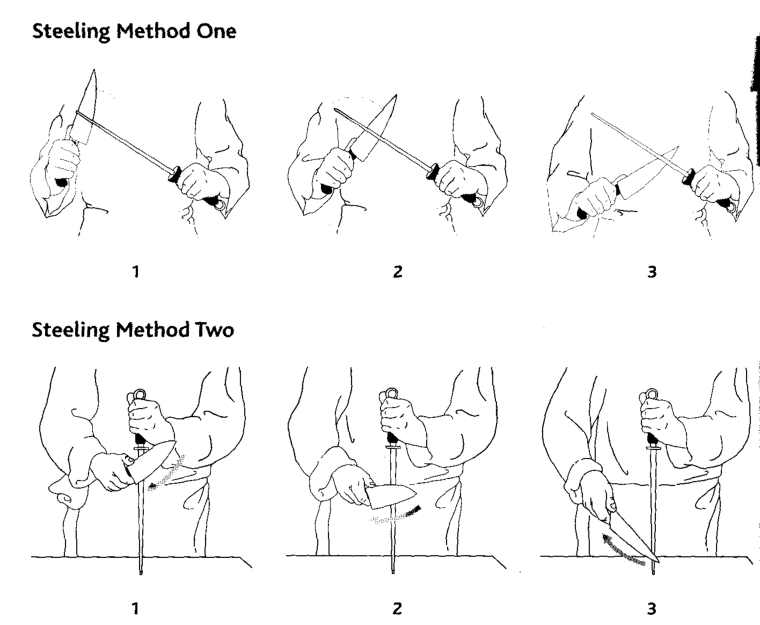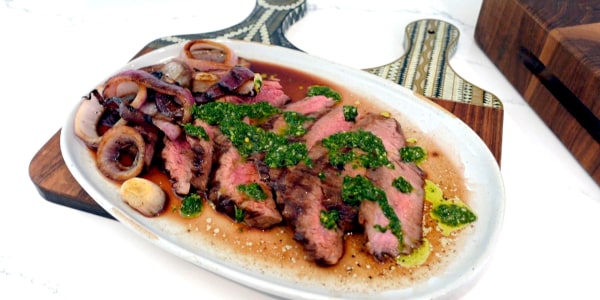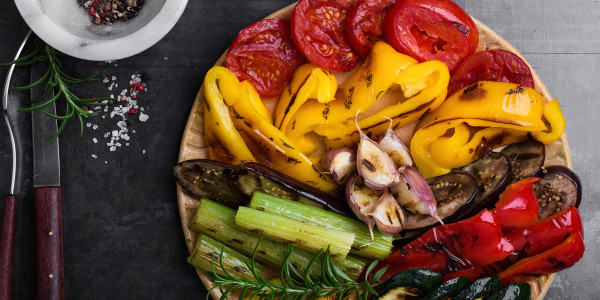Chef Jet Tila is joining TODAY to share his sharpest knife tips and techniques and shares recipes to help hone our cutting skills. He shows us how to make grilled flank steak with chimichurri sauce and fresh grilled vegetable salad.
To select a knife of good quality that fits your hand well and is suitable for the intended task, you need a basic knowledge of the various parts of a knife. Currently, the most frequently used material for blades is high-carbon stain less steel. Other materials, such as stainless steel and carbon steel, are also available.
For many years, carbon steel was used to make most knife blades. Although carbon steel blades take a better edge than either regular or high-carbon stainless steel, they tend to lose their sharpness quickly.
Also, carbon steel blades will discolor when they come into contact with high-acid foods such as tomatoes or onions. Carbon steel blades must be treated carefully to avoid discoloration, rusting, and pitting. They should be washed and thoroughly dried between uses and before storage. The metal is brittle and can break easily under stress.
Stainless steel is much stronger than carbon steel and will not discolor or rust. It is difficult to get a good edge on a stainless-steel blade, although once an edge is established, it tends to last longer than the edge on a carbon steel blade.

High-carbon stainless steel is a relatively recent development that combines the advantages of carbon steel and stainless steel. The higher percentage of carbon allows the blade to take and keep a keener edge; the fact that it is stainless steel means that it will not discolor or rust readily.
The most desirable type of blade for general use is taper ground, meaning that the blade has been forged out of a single sheet of metal and has been ground so that it tapers smoothly from the spine to the cutting edge, with no apparent beveling. Frequently used knives should have taper-ground blades.
Hollow-ground blades are made by combining two sheets of metal. The edges are then beveled or fluted. Although hollow-ground blades often have very sharp edges, the blade itself lacks the balance and longevity of a taper-ground blade. This type is often found on knives, such as slicers, that are used less frequently.
Tang
The tang is a continuation of the blade that extends into the knife's handle. Knives used for heavy work, such as chef's knives or cleavers, should have a full tang; that is, the tang is as long as the entire handle.
A partial tang does not run the full length of the handle. Although blades with partial tangs are not as durable as those with full tangs, they are acceptable on knives that will be used less frequently. Rat-tail tangs are much narrower than the spine of the blade and are encased in the handle (not visible at the top or bottom edges); these tangs tend not to hold up under extended use.
Handles
The handle should fit your hand comfortably. Manufacturers typically produce handles made from various materials and in varying shapes, intended to achieve a more custom fit to suit a variety of hand sizes. Spend some time holding the knife. A comfortable fit will improve the ease and speed with which you can work. A poor fit can result in fatigue or cramping. People with very small or very large hands should be sure that they are not straining to hold the handle. Some knives are especially constructed to meet the needs of left-handed chefs.
Rivets
Metal rivets are usually used to secure the tang to the handle. The rivets should be completely smooth and lie flush with the surface of the handle, to prevent irritation to the hand and so that there is no place for debris and microorganisms to collect.
Bolsters
In some knives there is a collar or shank, known as a bolster, at the point where the blade meets the handle. This is a sign of a well-made knife, one that will hold up for a long time. Some knives may have a collar that looks like a bolster but is actually a separate piece attached to the handle. These knives tend to come apart easily and should be avoided.
Types of Knives
Chef's Knife or French Knife
This all-purpose knife is used for a variety of chopping, slicing, and mincing chores. The blade is normally 8 to 14 inches long.
Paring Knife
This short knife, used for paring and trimming vegetables and fruits, has a 2- to 4-inch blade.
Slicer
This knife is used for slicing cooked meat. It has a long blade with a round or pointed tip. The blade may be flexible or rigid and may be taper-ground or have a fluted edge that consists of a series of ovals ground along the edge.
Steels
A steel should be used both immediately after sharpening the blade with a stone and also between sharpenings to keep the edges in alignment. It should also be within reach anytime you are using your knives. The length of the steel's working surface can range from 3 inches for a pocket version to over 14 inches. Hard steel is the traditional material for steels. Other materials, such as glass, ceramic, and diamond-impregnated surfaces, are also available.

Method 1
1. Start with the knife nearly vertical, with the blade resting on the steel's inner side.
2. Rotate the wrist as the blade moves along the steel in a downward motion.
3. Keep the blade in contact with the steel until the tip is drawn off the steel. Repeat the process with blade resting on the steel's outer side.
Method 2
1. Hold the steel in a near-vertical position with the tip resting on a non-slippery surface. Start with the heel of the knife against one side of the steel.
2. Maintain light pressure and use an arm action, not a wrist action, to draw the knife down the shaft of the steel in a smooth motion.
3. Finish the first pass by drawing the blade all the way along the shaft up to and including the tip. Repeat.
This dish is heavy in the rotation in the Tila house! It's delicious and gives you high chef cred to your guests.
I love this recipe because it's an easy way to get delicious vegetables into your repertoire. Grilling is the fastest and tastiest way to cook vegetables.


